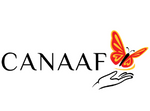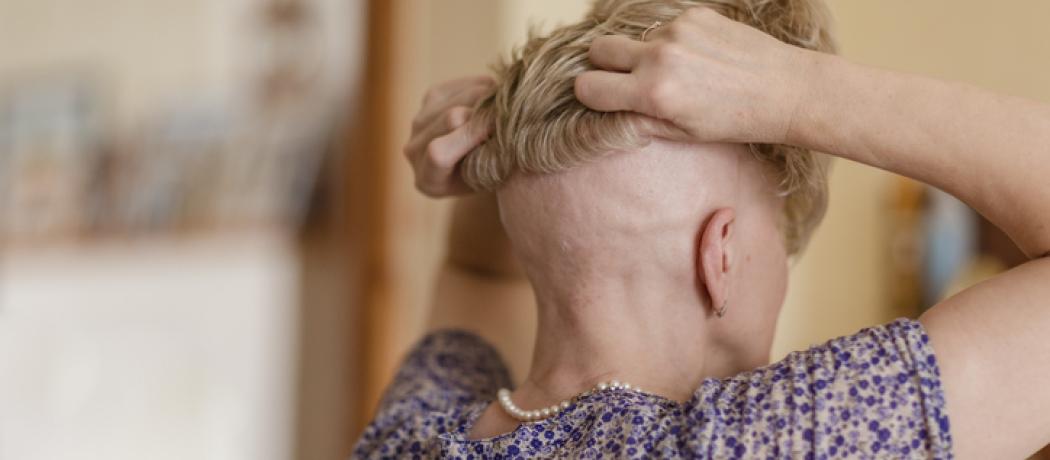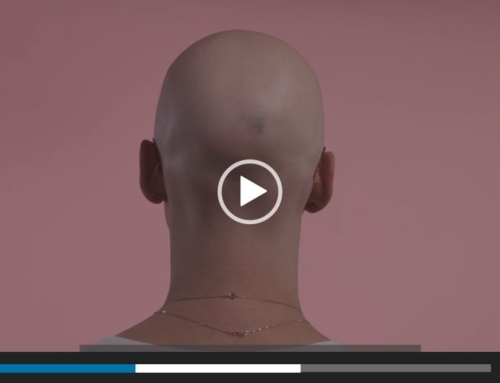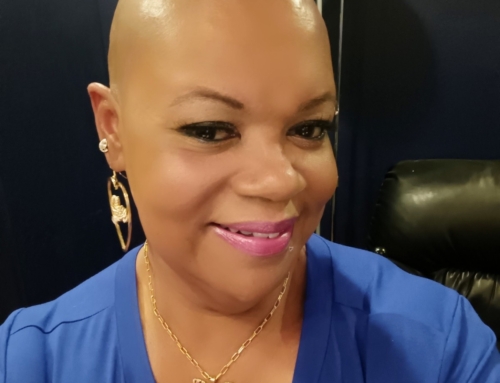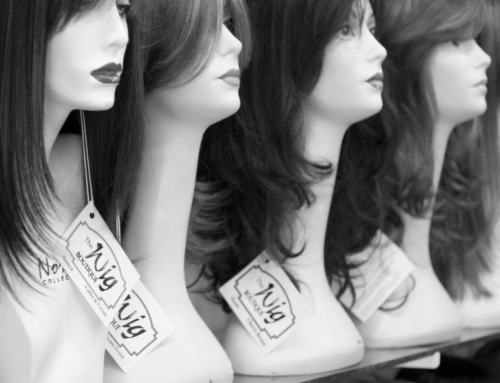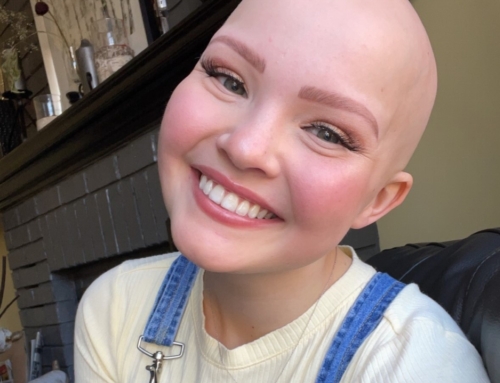This article was originally shared in BC Medical Journal on November 08
Read the original article by Lisa Rebane, BSc here.
Imagine you are talking with a friend, casually running your fingers through your long, thick hair, when you suddenly feel a bald spot. Once you get home, you take a mirror to your head and see a perfectly round, smooth patch about the size of a quarter. Your stomach drops as you search for the possibility that maybe you were too rough with your hair. At first you wait, but then nervously decide to book an appointment with your family doctor. They tell you about alopecia areata, an autoimmune disease that causes hair loss. An appointment with a dermatologist confirms the diagnosis, and with it, the beginning of a journey managing life with this disease.
The Canadian Dermatology Association describes alopecia areata as occurring in approximately 2% of the world’s population.[1] Patients often struggle psychologically and socially, with many experiencing high rates of depression and anxiety.[2] At the time of my own diagnosis, I remember dealing with a loss of identity and I felt betrayed by my own body for exposing me. It was then that I began searching for supportive communities, such as the Canadian Alopecia Areata Foundation (CANAAF). I later found that shared experiences are a significant contributor to building confidence and gaining self-acceptance regardless of being bald or choosing to cover up. CANAAF provides education, resources, treatment updates, and services to help Canadians with the daily challenges of living with alopecia areata.[3]
It is easy to take our hair for granted, but it protects us against the sun, heat loss, and debris. It is also a way to identify ourselves—our gender, sexuality, health, and style, among other notable societal factors. The loss of hair can create layers of stigma and misunderstandings. People may mistakenly think you have cancer and are undergoing chemotherapy. Short hair or baldness may be associated with a preference for an edgy look or having a certain sexual orientation, which may not be accurate. Those with this disease may feel less feminine or less masculine without hair. Children and teenagers may experience bullying. There is also the daunting pressure of having to explain yourself to strangers, creating a sense of isolation.
Unfortunately, it can be extremely costly to seek treatments and wigs for alopecia areata. Medications often require long-term use, and wigs need frequent replacement, resulting in a significant financial burden and added stress for the patient. Even though it is an autoimmune disease, not a cosmetic condition, there is often little or no insurance coverage. Overall, raising awareness and fostering productive conversations is critical to expanding health insurance policies to cover medications, wigs, and implementing therapeutic counseling services specific for this disease.
It is my hope that equipping physicians with a greater understanding of alopecia areata can create beneficial changes. Knowledge about support groups and education is vital, especially for new patients. Therefore, to help them manage an unpredictable time, it is important for health care practitioners to provide empathetic care with compassion and sensitivity while offering supportive resources.
—Lisa Rebane, BSc
References
1. Canadian Dermatology Association. Alopecia. Accessed 26 September 2023. https://dermatology.ca/public-patients/hair/alopecia.
2. Gilding AJ, Ho N, Pope E, Sibbald C. The burden of disease in alopecia areata: Canadian online survey of patients and caregivers. JMIR Dermatol 2022;5:e39167.
3. Canadian Alopecia Areata Foundation. Accessed 25 October 2023. www.canaaf.org.
Lisa is a volunteer mentor with CANAAF. She assists people who are struggling with alopecia areata to offer guidance and emotional support. CANAAF is run by a volunteer Board of Directors. Through support groups, online communities, and events, CANAAF provides a safe space for individuals to seek guidance, share their stories, and receive encouragement from others who have walked a similar path. The CANAAF Heads Up Fund is a program that offers financial assistance to those in financial need toward the purchase of a hairpiece. CANAAF offers this and many other essential services to empower individuals living with alopecia areata thanks to the power of its volunteer-driven community.
